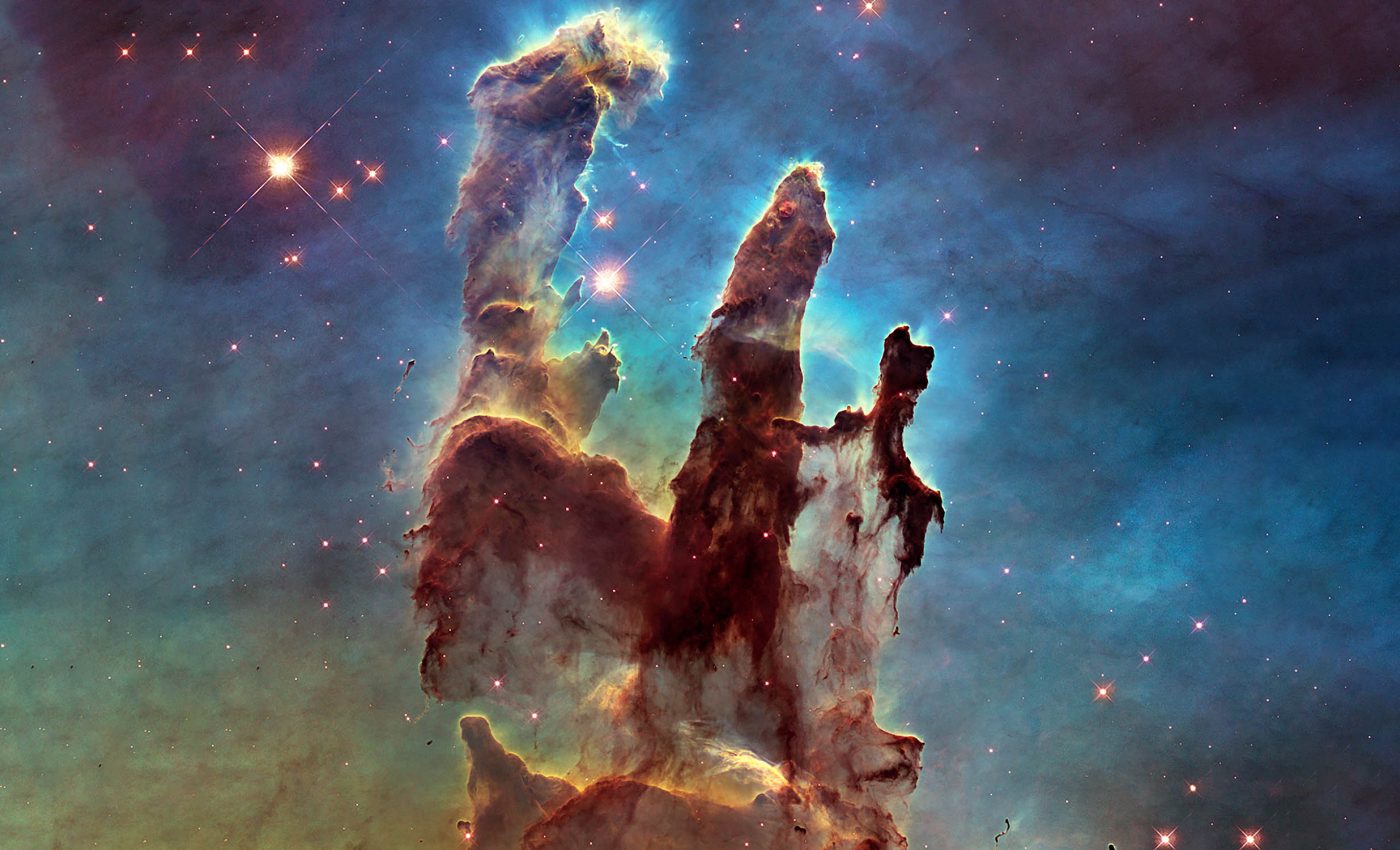
35 years of Hubble: The telescope that changed our view of the universe
The Hubble Space Telescope, the most celebrated observatory in history, is officially 35 years old.
To mark the milestone, NASA has released a fresh gallery of images spanning our solar system and well beyond – from Mars’s ruddy surface to star-forming nebulae and a neighboring galaxy.
The new portraits serve not only as a birthday gift to the public, but also as a vivid reminder of how profoundly Hubble has transformed modern astronomy and popular culture alike.
Fixing Hubble’s blurry beginnings
On April 24, 1990, the space shuttle Discovery roared into the sky with Hubble folded inside its cargo bay. A NASA commentator called the telescope “a new window on the universe,” raising expectations sky-high.
Yet jubilation faded fast when engineers found a tiny mirror flaw that made early images frustratingly blurry.
The rescue came in December 1993, when astronauts performed the first of five intricate servicing missions. They installed corrective optics – an optical “contact lens” – and upgraded Hubble’s cameras and electronics. The successful fix restored the telescope’s vision and set the stage for three decades of breakthrough science.
“Hubble opened a new window to the universe when it launched 35 years ago,” said Shawn Domagal-Goldman, acting director of the Astrophysics Division at NASA Headquarters.
“Its stunning imagery inspired people across the globe, and the data behind those images revealed surprises about everything from early galaxies to planets in our own solar system.”
An observatory that keeps giving
Since that turning point, Hubble has recorded nearly 1.7 million observations of roughly 55,000 celestial targets.
Those data have generated more than 22,000 peer-reviewed papers, amassing over 1.3 million citations – figures that make Hubble the most scientifically productive telescope ever built.
All its raw images and spectra, totaling more than 400 terabytes, are publicly archived, fueling new discoveries every year.
The mission’s longevity lets astronomers revisit cosmic scenes and track their evolution in near-real time.
Hubble has tracked the seasonal shifts of Mars and Saturn, watched supernova remnants balloon outward, chronicled bright knots in active galactic nuclei, and even captured the afterglow of asteroid collisions.
Each long-baseline study illuminates processes that once seemed too slow to witness within a single human career.
How Hubble redefined the cosmos
Before Hubble, ground-based observatories peering through Earth’s turbulent atmosphere could see only halfway across the visible universe.
Estimates of cosmic age oscillated wildly, and astronomers could only speculate about whether every galaxy harbored a central supermassive black hole. The existence of planets around other stars was still unconfirmed.
Hubble rewrote those narratives. Its legendary Deep Field images unveiled a staggering population of faint, ancient galaxies stretching back more than 13 billion years.
By tracking Cepheid variable stars and Type Ia supernovae, the telescope pinned down the rate of cosmic expansion. It helped expose dark energy, a discovery that later earned the 2011 Nobel Prize in Physics.
Hubble also furnished the first measurements of exoplanet atmospheres and demonstrated that supermassive black holes lurk in the cores of most large galaxies.
The telescope’s wide-ranging achievements inspired a wave of next-generation observatories, including the infrared-optimized James Webb Space Telescope.
Engineering made Hubble unstoppable
Part of Hubble’s success stems from its design as a serviceable spacecraft.
Between 1993 and 2009, five shuttle crews rendezvoused with the 24,000-pound telescope to swap out gyroscopes, batteries, and scientific instruments. These cosmic pit stops transformed Hubble into a nimble, ever-improving workhorse.
“The fact that it is still operating today is a testament to the value of our flagship observatories, and provides critical lessons for the Habitable Worlds Observatory, which we plan to be serviceable in the spirit of Hubble,” Domagal-Goldman noted.
While the final shuttle mission in 2009 left Hubble in excellent health, engineers have spent the past decade developing innovative software patches. They also created remote troubleshooting techniques to counter aging hardware.
As a result, the Hubble telescope remains fully operational. It partners with Webb to study exoplanet atmospheres and map the formation of distant galaxy clusters.
A cultural icon
Beyond its scientific cachet, Hubble has captured the public imagination. Its images – Pillars of Creation, the Eagle Nebula, the Horsehead, the Sombrero Galaxy – decorate classrooms, inspire artists, and headline documentaries.
Hubble’s visual output demystifies astrophysics, turning arcane data into vibrant landscapes that convey both beauty and scale.
The telescope’s success has shown that deep-space exploration is not just for scientists, but for everyone who gazes upward in wonder.
New telescope built on Hubble’s lessons
Hubble’s torch will eventually pass to the Habitable Worlds Observatory (HWO), NASA’s proposed successor for the 2040s.
With a mirror much larger than Hubble’s and capabilities in the ultraviolet and visible bands, HWO aims to be up to 100 times more sensitive to starlight.
A key mission goal is finding Earth-size planets in habitable zones and detecting possible signs of life in their atmospheres. Engineers plan to make HWO serviceable, drawing directly on the lessons learned from three decades of keeping Hubble alive and thriving.
A legacy that’s still growing
For now, Hubble continues its pioneering journey, orbiting Earth every 97 minutes at an altitude of about 330 miles.
Each day it scans the space, adding new data to its towering archive and offering humanity fresh vistas of star birth, galaxy collisions, and planetary weather.
From its rocky start to its current stardom, Hubble’s 35-year run epitomizes ingenuity, perseverance, and curiosity – the very traits that fuel all great explorations.
NASA’s newest image release is both a birthday card and a reminder: somewhere high above, an aging yet agile Hubble telescope still opens that “new window on the universe,” inviting us to peer through and dream.
Image Credit: NASA/ Hubble Heritage Team
—–
Like what you read? Subscribe to our newsletter for engaging articles, exclusive content, and the latest updates.
Check us out on EarthSnap, a free app brought to you by Eric Ralls and Earth.com.
—–













